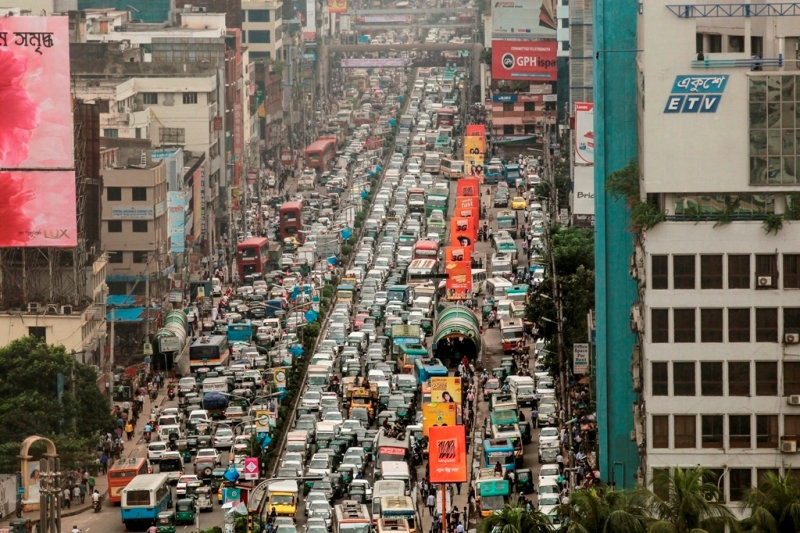#{Title}
#{Copy}
 Peter Jenkins describes how a new metro system will alleviate congestion and pollution in the capital of Bangladesh and stimulate economic prosperity.
Peter Jenkins describes how a new metro system will alleviate congestion and pollution in the capital of Bangladesh and stimulate economic prosperity.
Dhaka is the sixth most densely populated city in the world. The animated streets teem with vibrant activity but they are also congested, hectic and unsafe for pedestrians. The numbers continue to surge; there are 400,000 migrant rickshaw drivers working in the city and 800,000 working in the textile industry. Almost 22 million people live in its urban area, predicted to reach 31.2 million by 2035. However despite its issues with poverty and overpopulation, Dhaka remains the largest and most powerful economy in Bangladesh, contributing 40% of the country’s GDP.
A combination of climate-induced displacement and migration and the city’s rapid, unplanned urbanisation has left the transportation infrastructure under severe pressure. The national government and overseas investors are responding to this unprecedented growth by proposing a network of modern and efficient public metro systems in the major cities throughout the country.
We are designing nine underground stations for Dhaka Metro Line 5, which will cross the heart of the city from west to east. In collaboration with Nippon Koei, it is our first project in Bangladesh, and draws on our experience of designing significant transport projects such as Glasgow Queen Street Station and Whitechapel Station on the Elizabeth Line in London.

Dhaka’s new infrastructure, including the emerging metro network, looks towards the bright future of the country and its people, and our design concepts respect the traditional values and distinct characteristics of Dhakaite culture, supporting the localism and micro-business networks that contribute positively to the life and animation of the city.
Hawker stalls are integrated into station entrance designs, sheltered by oversailing canopies, which also provide covered waiting areas for auto rickshaws. With motors bolted onto tricycle frames, upgraded from their historic pedal-driven antecedents, these richly decorated one or two-person chariots buzz through traffic providing a vital part of the local transport infrastructure: the ‘last mile’ connections to individual homes. By carefully clustering uses together on this micro-scale we create multi-modal interchanges which become the focus of local life. This, in turn, triggers development on surrounding sites across a variety of scales - from individual buildings to streets and city masterplans. As with all transport infrastructure, each individual metro station can act as the catalyst for transit oriented developments, stimulating inspiring modern places that embrace the history of the city and its local neighbourhoods.
It is important to root the stations within their context so we have developed a design which combines specific solutions unique to each neighbourhood with standard coherent unifying elements along the entire Metro line. Station entrances complement their surroundings through the use of materials, structure and size whilst sharing standard features such as signage. The character of each station changes as passengers descend towards the platforms, with surface textures and details that repeat across the network to support easy wayfinding and reinforce a familiar recognisable pattern for passengers.


Our interdisciplinary team of professionals from our studios in Manchester, New Delhi and Dhaka, is combining its global experience in transport with local and regional knowledge to define the cultural and climatic fit with a city as vast and complex as Dhaka. With engineering solutions from our colleagues Nippon Koei in Japan, this is a major international effort - and what it takes to truly make a city move.